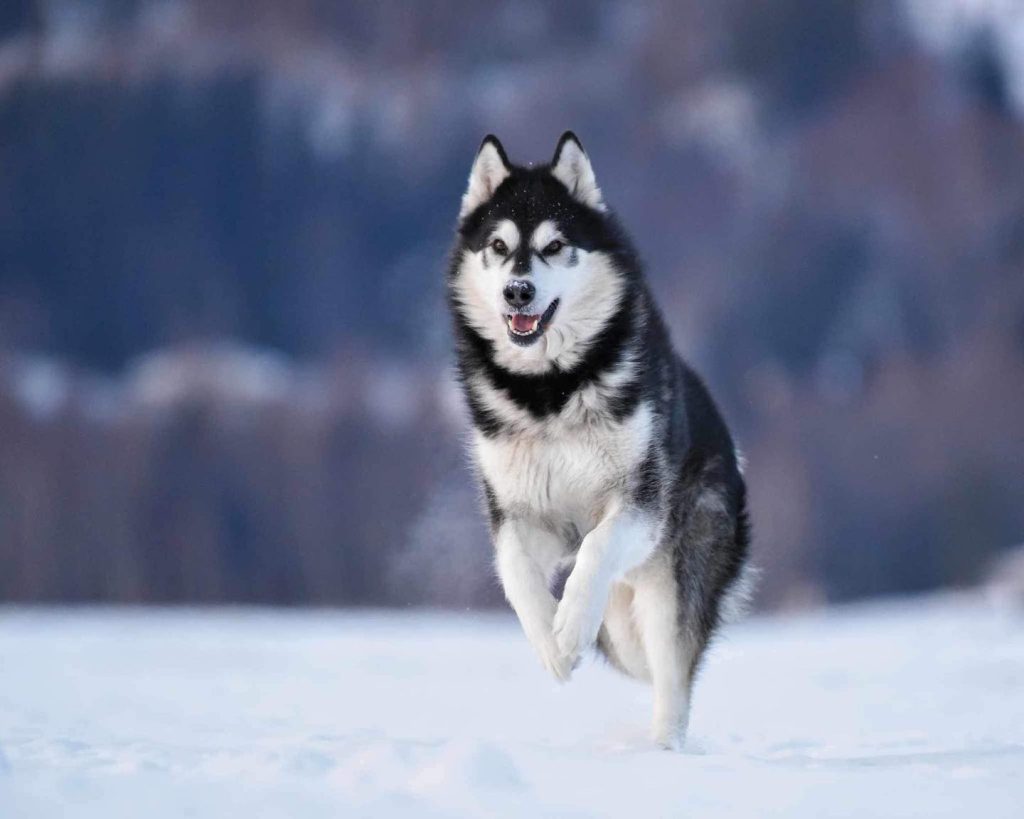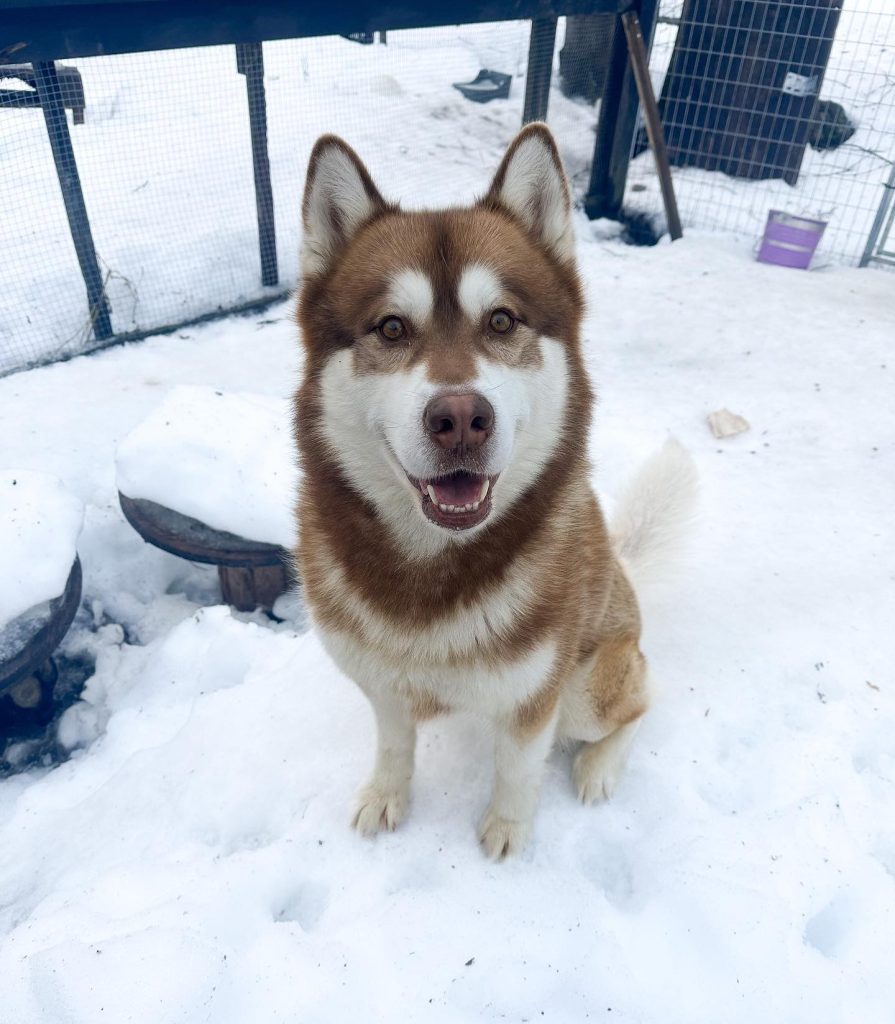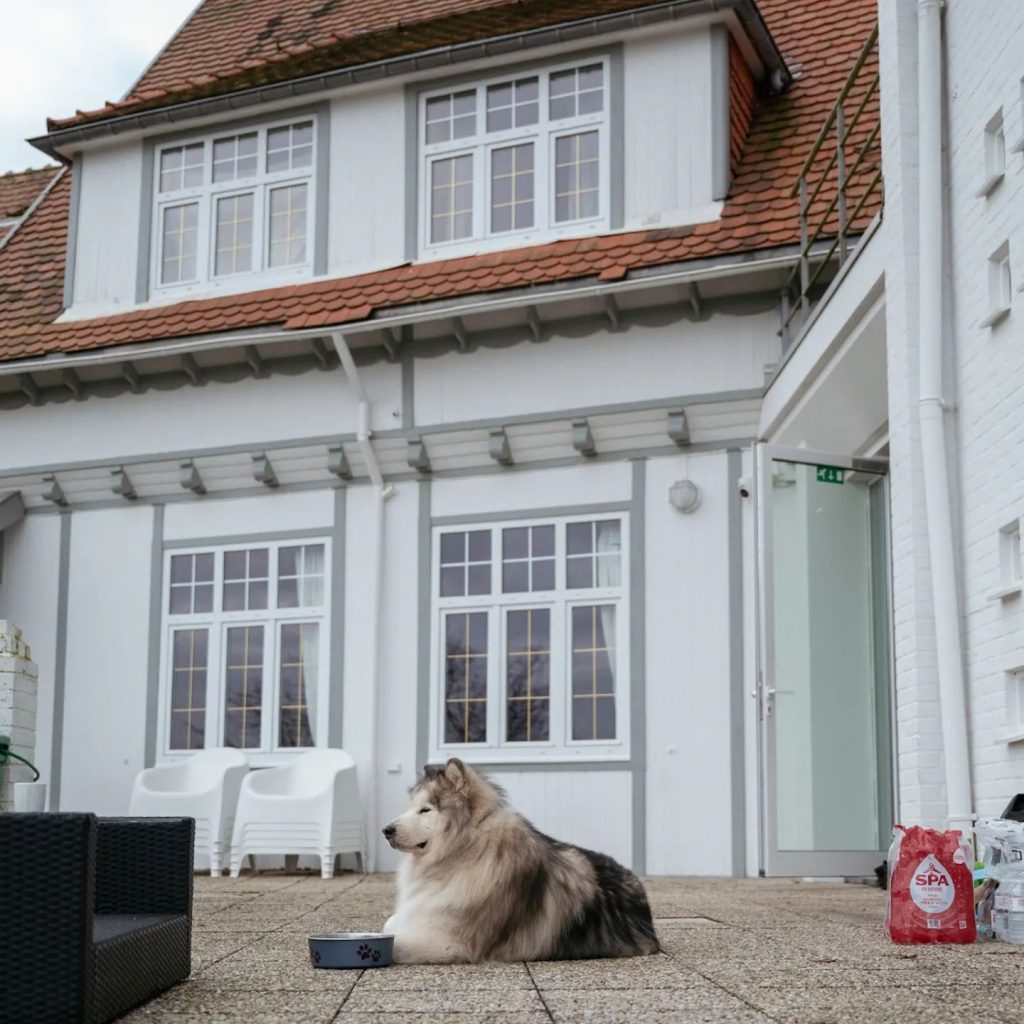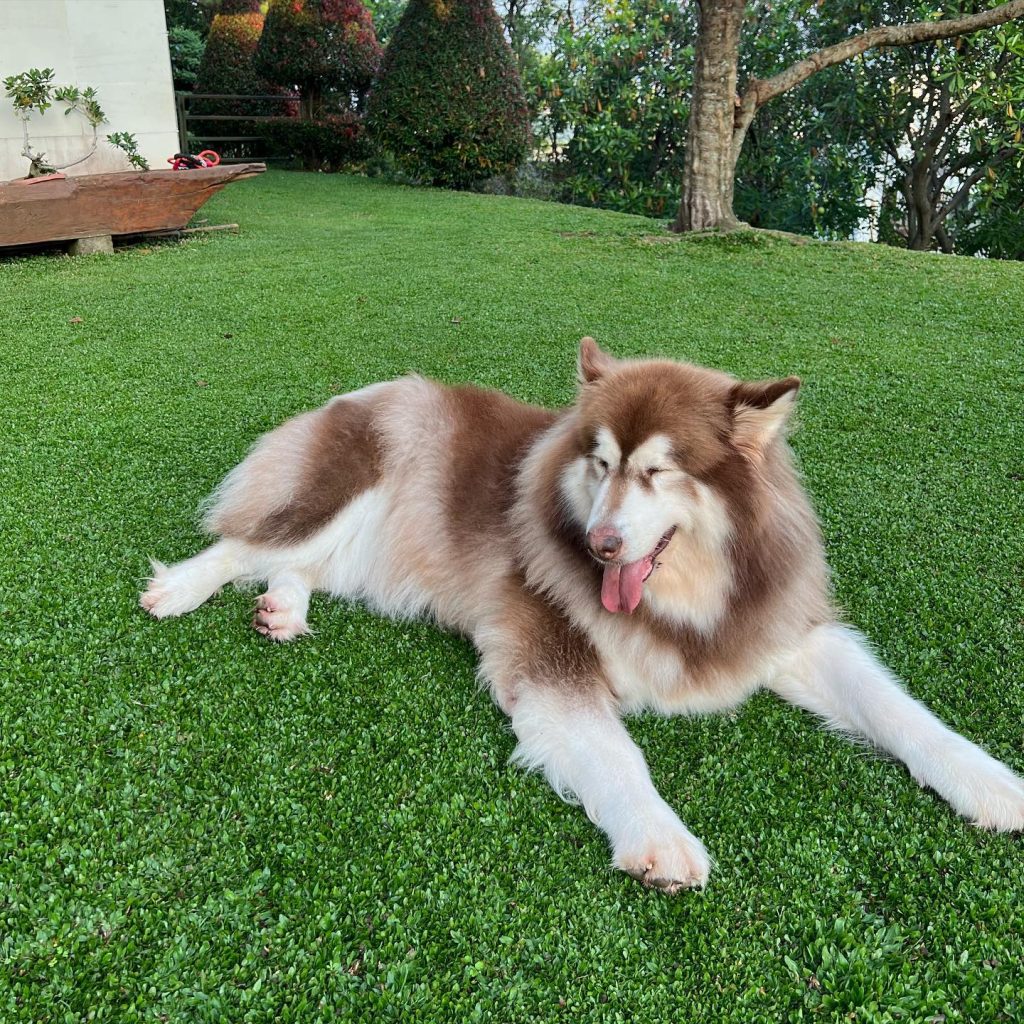
Understanding Your Alaskan Malamute
The Alaskan Malamute is a breed that captures the heart with its strength, endurance, and majestic appearance. Originating from Alaska’s harsh and cold environments, these dogs were bred for their ability to haul heavy freight as part of a sled team. Understanding your Alaskan Malamute goes beyond admiring their physical capabilities; it involves recognizing their unique personality traits, inherent behaviors, and the deep bond they can form with their human families.
About the Breed
The Alaskan Malamute is one of the oldest Arctic sled dogs, with a powerful physique built for stamina and strength. They possess a thick double coat, erect ears, and a plumed tail carried over the back. Characterized by their wolf-like appearance, Malamutes are often mistaken for wolves or Huskies but are more extensive and possess a more robust build. Their temperament is dignity, friendliness, and loyalty, but they also have an independent streak that can challenge even the most experienced dog owners.
Unique Training Challenges
Training an Alaskan Malamute presents unique challenges stemming from their intelligence, independence, and physical strength. Understanding these challenges is the first step towards practical training and a harmonious relationship with your dog.
Need for Structure
Malamutes thrive on structure and transparent leadership. They respect an owner who is consistent and fair in training, setting boundaries from the outset. Without a clear hierarchy, they may attempt to assert dominance, leading to behavioral issues. Establishing rules and sticking to them is crucial for a well-behaved Malamute.
Overcoming Boredom
Boredom is a significant challenge in training Malamutes. Their intelligent and active nature requires mental stimulation to prevent destructive behaviors. Incorporating puzzle toys, varied exercises, and regular training sessions can keep their minds engaged and prevent them from finding less desirable outlets for their energy.
Importance of Family Involvement
Training a Malamute is not a one-person job; it requires involvement from the entire family. Consistency across all members in commands, rules, and boundaries helps reinforce training. Malamutes are pack-oriented, and involving the whole family helps them understand their place within the pack, fostering a healthy and balanced dynamic.
Foundations of Training
Laying a solid foundation is crucial in training any dog, and this holds especially true for breeds like the Alaskan Malamute, known for their intelligence and independence. The initial steps you take can significantly impact the effectiveness of your training and the bond you build with your Malamute.
1. Start with a Strong Foundation
A robust and trust-based relationship between the dog and the owner is the cornerstone of any successful training program. This means establishing a bond that balances affection with discipline for Alaskan Malamutes. Early socialization, exposure to various people, environments, and situations, and consistent daily routines form the bedrock of this foundation. This approach not only helps in mitigating potential behavioral issues but also aids in developing a well-adjusted, confident dog.
2. Choose a Distinct Command Word
Clarity and consistency are essential in dog training, particularly with breeds as intelligent and independent as Malamutes. Selecting distinct command words for each desired action and using them consistently helps prevent confusion. It’s important to avoid using the dog’s name as part of a command to maintain its effectiveness in getting the dog’s attention.
3. Begin in a Controlled Environment
Starting your training in a controlled, distraction-free environment allows your Malamute to focus solely on you and the task. This controlled setting can be as simple as a quiet room in your house. As your dog becomes more proficient in responding to commands, gradually introduce distractions to strengthen their focus and obedience.
4. Embrace Positive Reinforcement
Positive reinforcement is a powerful tool in training Alaskan Malamutes. Rewarding desired behaviors with treats, praise, or play encourages repetition. This method strengthens the bond between you and your dog and makes training a more enjoyable and rewarding experience for both. Avoid negative reinforcement techniques, as they can harm the trust between you and your Malamute and lead to adverse behavioral outcomes.

Malamute 101: Essential Commands and Skills
Teaching your Alaskan Malamute essential commands and skills is not just about obedience; it’s about communication, safety, and enhancing the bond between you and your dog. Basic obedience lays the groundwork for a well-mannered dog, while advanced skills can tap into the breed’s natural abilities and instincts.
Teaching Basic Obedience
Basic obedience training is crucial for any dog, but for robust and independent breeds like the Alaskan Malamute, it’s essential. It establishes your role as the leader and ensures your dog can safely interact with the world around them.
“Sit” Command
The “Sit” command is one of the most fundamental skills in dog training and an excellent starting point for Malamutes. Hold a treat close to your dog’s nose to teach this command, and slowly lift it over their head. As their head goes up, their butt will naturally lower. The moment they sit, say “Sit,” give them the treat and praise them. Practice this in short, frequent sessions, and your Malamute will soon master this basic but essential command.
Basic Behavior Commands
In addition to “Sit,” other basic behavior commands like “Stay,” “Come,” “Down,” and “Heel” are vital. Each command serves a unique purpose in managing your dog’s behavior and ensuring their safety. “Stay” can prevent them from running into dangerous situations, “Come” ensures they return to you when called, “Down” is helpful for calming and control, and “Heel” keeps them by your side during walks, crucial for a strong, pulling breed like the Malamute.
Advanced Skills
For Alaskan Malamutes, whose lineage includes pulling sleds over snowy terrains, advanced training can provide the mental stimulation and physical exercise the breed craves.
Mushing Commands for Malamutes
Mushing commands are not just for sled dogs; they can be a fun and engaging way to train your Malamute, tapping into their instincts. Commands like “Hike!” (start moving), “Whoa!” (stop), “Gee!” (turn right), and “Haw!” (turn left) can be taught using treats and positive reinforcement, even if you’re just practicing in your backyard or at the park.
Sled Pulling Basics
Sled pulling can be both a competitive sport and a fantastic way for your Malamute to get exercise. Starting with basic commands and a pulling harness, you can introduce your dog to pulling light objects on soft ground. It’s crucial to ensure your Malamute is physically mature and cleared by a vet before beginning strenuous training like sled pulling to prevent injury.
Age-Specific Training Techniques
Training an Alaskan Malamute, whether a puppy or an adult, requires understanding and adapting to their learning capabilities at different life stages. Age-specific training techniques can help address the unique needs and challenges of Malamutes as they grow.
Training a Malamute Puppy
Puppyhood is a critical time for learning and socialization. Malamute puppies are energetic, curious, and ready to explore the world.
Starting Points for Training
- Socialization: Expose your puppy to a variety of people, animals, environments, and sounds to promote well-rounded development.
- House Training: Establish a consistent routine for bathroom breaks and use positive reinforcement to encourage good habits.
- Basic Commands: Start with simple commands like “Sit,” “Stay,” and “Come.” Use treats and praise to reward success.
- Bite Inhibition: Teach your puppy to control the force of their bite through play and interaction, redirecting any biting behavior to appropriate toys.
- Leash Training: Introduce your puppy to a collar and leash early on, starting with short, positive experiences.
Training the Adult Malamute
Training an adult Malamute can be challenging but rewarding, as they bring strength and a more established personality to the learning process.
- Consistency: Maintain consistent rules and routines to provide structure and stability.
- Advanced Training: Build on basic commands with more complex tasks and obedience training to keep their mind engaged.
- Exercise: Incorporate regular physical activity into their routine to manage energy levels and promote good behavior.
- Behavioral Correction: Address any unwanted behaviors immediately with positive reinforcement techniques, avoiding punishment that can harm your relationship.
- Patience and Persistence: Adult Malamutes may take longer to learn new behaviors, so be patient and persistent in your training efforts.

Training Tools and Resources
Practical training of an Alaskan Malamute often involves combining techniques, tools, and resources. Whether you’re pondering how to train an Alaskan Malamute or explicitly focusing on Alaskan Malamute puppy training, having the proper support and equipment can make all the difference.
Utilizing a Professional Trainer
For those wondering, “Are Alaskan Malamutes easy to train?” the answer can vary. While they are intelligent and capable, their independent nature can pose challenges. This is where a professional trainer can be invaluable.
- Expertise: A professional trainer brings experience and knowledge, especially useful for first-time Malamute owners.
- Behavioral Issues: Trainers can offer solutions for specific challenges, such as pulling on the leash or stubbornness.
- Socialization: Group classes provide a controlled environment for your Malamute to interact with other dogs and people.
Motivating with Food
Food is a powerful motivator in Alaskan Malamute puppy training and for adult dogs alike.
- High-Value Treats: Use treats your Malamute finds irresistible to capture their attention and encourage learning.
- Timing: Deliver treats immediately after the desired behavior to reinforce the connection between the action and the reward.
- Variety: Rotate treats to keep your Malamute interested and engaged in training sessions.
Specialized Collars and Equipment
The right equipment can support your training efforts, ensuring safety and effectiveness.
- Harnesses: A well-fitted harness can give you better control during walks, especially for a strong breed like the Malamute.
- Long Lines: For recall training, a long line allows your Malamute to explore safely while you maintain control.
- Interactive Toys: Toys that challenge your Malamute mentally can be part of training, encouraging problem-solving skills.
Breed-Specific Training Considerations
Understanding the breed’s specific needs and characteristics is crucial when training Alaskan Malamutes. These dogs are known for their strength, intelligence, and independence, which can influence their training.
Is Training an Alaskan Malamute Necessary?
The simple answer is yes. Given their size, strength, and energy levels, training is beneficial and essential for a harmonious relationship with your Malamute.
Addressing the Breed’s Trainability
While Alaskan Malamutes are intelligent, their independent streak can challenge training. They respond best to training that is consistent, patient, and engaging. Understanding the Alaskan Malamute life stages is also crucial, as training techniques may vary from puppyhood to adulthood.
5 Alaskan Malamute Training Secrets
- Start Early: Begin training when you bring your Malamute home, regardless of age. Early training and socialization are essential to a well-behaved dog.
- Exercise is Key: Incorporating plenty of physical activity can help manage energy levels and improve focus during training sessions.
- Leverage Their Intelligence: Use engaging, varied training methods to keep their attention. Alaskan Malamute agility training, for example, can be a great way to stimulate their mind and body.
- Positive Reinforcement: Reward-based training methods work best, encouraging cooperation without dampening the Malamute’s spirited nature.
- Be the Alpha: Establishing yourself as the pack leader with a calm, assertive approach is crucial due to their pack-oriented instincts.
Additional Training Insights

Training in Diverse Environments
Training your Alaskan Malamute in various environments is crucial for developing a well-rounded and adaptable companion. This approach challenges your Malamute to maintain focus and obedience amidst different distractions, whether it’s the bustling energy of city streets or the intriguing scents of a forest. Such diversity in training settings enhances your Malamute’s ability to respond reliably in any situation and keeps their training sessions engaging and mentally stimulating. It’s an essential aspect of how to train an Alaskan Malamute, ensuring they’re equipped to handle the complexities of the natural world with confidence and calm.
The Importance of Consistency
Consistency in training an Alaskan Malamute cannot be overstated. It forms the foundation of effective communication between you and your dog, ensuring your Malamute understands what is expected of them. This means being consistent with commands, routines, and how you respond to sound and undesirable behaviors. Such consistency helps to avoid confusion, builds trust, and reinforces the training principles, making it easier for your Malamute to learn and follow your guidance. It’s a fundamental principle in Alaskan Malamute training that supports the overall success of your training efforts.
Troubleshooting Common Training Issues
Addressing Common Behavioral Concerns
When facing training challenges with your Alaskan Malamute, consider these Alaskan Malamute training tips:
- Pulling on the Leash: Implement a no-pull harness and practice stop-and-go walking techniques.
- Stubbornness: Use high-value rewards and vary your training routines to keep sessions interesting.
- Excessive Barking: Teach a “Quiet” command and provide plenty of physical and mental exercise to mitigate boredom-induced barking.
Addressing these issues promptly and consistently can help maintain the progress of your Malamute’s training and ensure a harmonious relationship.
Beyond Basic Dog Training

How to Groom an Alaskan Malamute
Grooming an Alaskan Malamute involves:
- Regular Brushing: Daily brushing during shedding season helps manage their thick coat.
- Bathing: Use dog-specific shampoo to bathe your Malamute every 6-8 weeks or as needed.
- Nail Trimming: Regular nail trims are essential to prevent discomfort and mobility issues.
Ensuring Proper Behavior in the Car
To ensure good behavior during car rides:
- Crate Training: Use a well-ventilated crate for safety and comfort.
- Short Trips: Start with short journeys to acclimate your Malamute to the car.
- Positive Reinforcement: Reward calm behavior in the car to reinforce good habits.
Evaluating Your Readiness for Malamutes
Is an Alaskan Malamute Right for You?
Deciding if an Alaskan Malamute is the right fit involves considering several factors:
- Space: Malamutes need ample space for exercise and play.
- Time: They require significant time for training, exercise, and grooming.
- Experience: Best suited for those with experience in handling large, strong-willed breeds.
- Climate: Their thick coat is more suited to more relaxed environments.
- Family Dynamics: Malamutes do well in active, engaging family settings.
Carefully evaluate your lifestyle and capabilities to match this majestic and demanding breed harmoniously.
Conclusion
Training and caring for an Alaskan Malamute is a rewarding journey that demands time, patience, and understanding. By embracing the unique needs of this breed and committing to consistent training and care, you can forge a strong bond and enjoy the companionship of a well-behaved and happy Malamute.
